The Champions League is finally back and all is once again well with the world. European football has been gone for far too long to count, and that is exactly why Tuesday’s result might sting a bit more than we would like it to.
Olympique Lyonnais hosted Barcelona at their Groupama Stadium in a clash of two extremely attack-minded teams as goals galore were expected. But as is the case so often, what is on paper rarely reflects what actually transpires on the pitch with both the French and the Catalan teams failing to rattle each other’s nets.
The visitors will however be the more disappointed ones, or at least they should be,. They had control over most of the proceedings in France while the home team will undoubtedly settle for this goalless draw and take their chances at the Camp Nou in a couple of weeks’ time.
This tactical analysis will use statistics to dissect the game that promised much but delivered very little in terms of the scoreline, and determine who were the actual victors of a rather uninspiring draw.
Lineups
Barcelona (4-3-3)
Starting XI: ter Stegen – Semedo, Pique, Lenglet, Alba – Sergi, Busquets, Rakitić – Messi, Suarez, Dembele
Bench: Iñaki Peña, Murillo, Umtiti, Vidal, Aleñá, Coutinho, Malcom
Coach: Ernesto Valverde
Lyon (4-2-3-1)
Starting XI: Lopes – Dubois, Marcelo, Denayer, Mendy – NDombele, Aouar – Traore, Memphis, Terrier, M. Dembele
Bench: Gorgelin, Tete, Marçal, Solet, Tousart, Cheikh, Cornet
Coach: Bruno Genesio
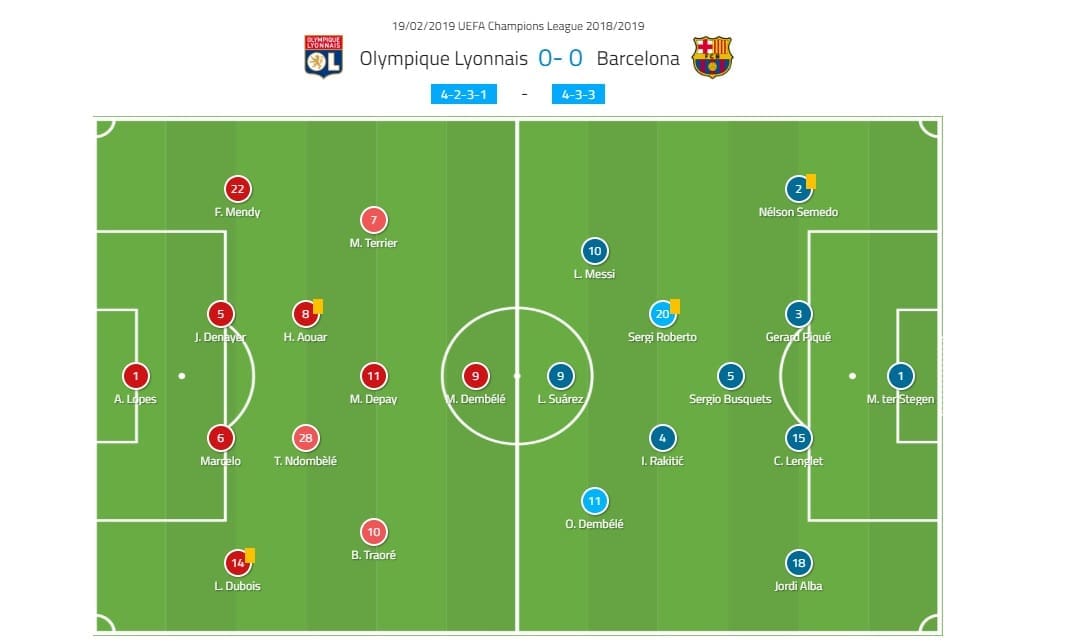

Barcelona’s setup
Life has not been kind on the Catalan giant as the troubles of their damned February continue. Ernesto Valverde’s team is finally (mostly) injury-free but be it exhaustion, a rough patch of fixtures or something else, they are experiencing a slight dip in form.
Playing away from home on a big Champions League night, the Ant decided to draw the cards from the safe side of his deck and opt for balance instead of chaos. Marc-Andre ter Stegen’s position was never in doubt, and neither were the ones of Jordi Alba, Clement Lenglet and Gerard Pique respectively.
The position up in the air, as per usual, was that of the right-back. In the end, it was given to Nelson Semedo over Sergi Roberto. The Spaniard, however, was also on the field but playing a bit higher up as a right midfielder, next to Sergio Busquets and Ivan Rakitić. The front three was a largely expected one, comprising of the all too familiar trident of Ousmane Dembele, Luis Suarez and Lionel Messi.
The team operated in a 4-3-3 system on paper, but on the field it turned into a diamond-like shape of a vintage Ernesto Valverde 4-4-2 formation.
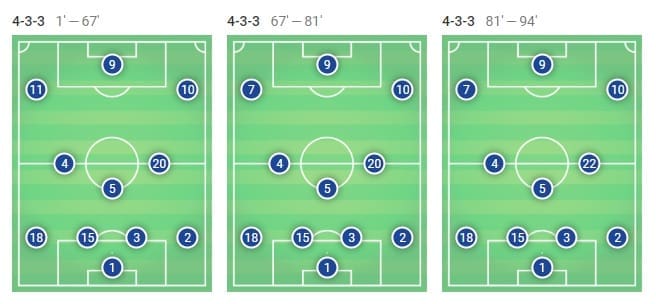
Lyon’s setup
Bruno Genesio and his troops were also locked and loaded for one of the biggest, if not the biggest, clash of their current campaign. Lyon boast one of the most talented young squads in Europe, relying on quick attacking football and some beautiful transition play.
With an average squad age of just 24, the French team is an exciting prospect in world football, and their stalemate with Barcelona proves that point. Genesio had enough luck and wit to have most of his players ready for the Catalans.
The only missing link was Nabil Fekir who had to sit this big clash out and watch from the stands because of his yellow-card suspension. Ferland Mendy, his left-back, also gave his coach a bit of a scare during the warm-up when he supposedly injured himself, but managed to play anyway in the end.
The rest of the squad was fit and ready and the only change, apart from Mendy being rested in Ligue 1 against Guingamp, was Tanguy Ndombele returning to the lineup, and Lucas Tousart dropping to the bench. Moussa Dembele led the attack, followed by Terrier, Memphis Depay and Traore.
Genesio decided to field his troops in a 4-2-3-1 system that switched to a more compact 4-5-1 in the second half of the match in France.
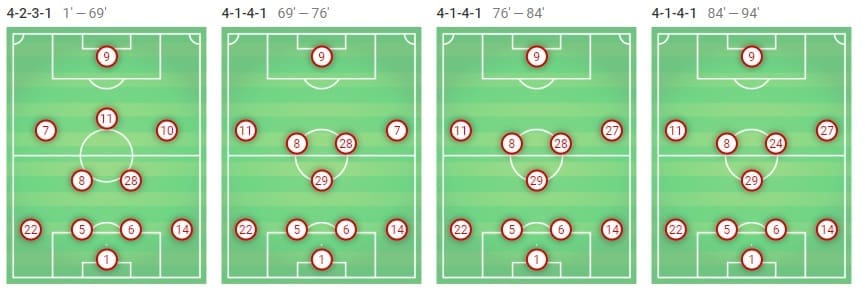
An electric start to the game
Just as previewed by almost everyone before the game, the battle of two extremely attacking sides resulted in a high tempo clash with almost non-stop action while both were fit enough to endure it. Barcelona and Lyon had a similar strategy of exploiting their opponent’s weaknesses but had somewhat different approaches to those plans.
Barcelona’s choice of personnel was the first focal point of Ernesto Valverde’s strategy. The fact that both Nelson Semedo and Sergi Roberto started the game meant that the Basque coach was going for a contained and controlled match with the Blaugrana setting the tempo and pulling the strings.
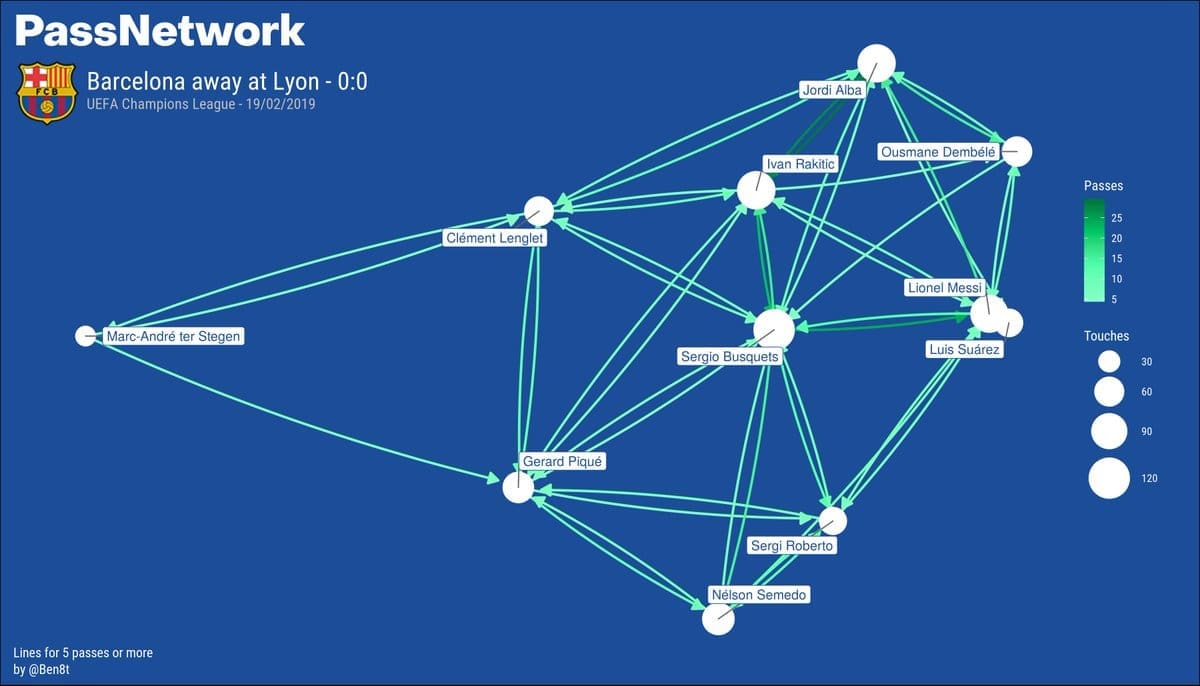
Notice in the pass network above how differently positioned Barcelona’s flanks are. This tells us two things: the left was the attacking side with both Jordi Alba and Ousmane Dembele positioned higher up the pitch, while the right was there to hold the potentially more dangerous side when it came to Lyon’s counter-attacking capabilities.
Roberto and Semedo’s task was mainly to defend, so Barcelona’s right side was never really an attacking threat, although it could have been with the attacking potential of both players occupying that position.
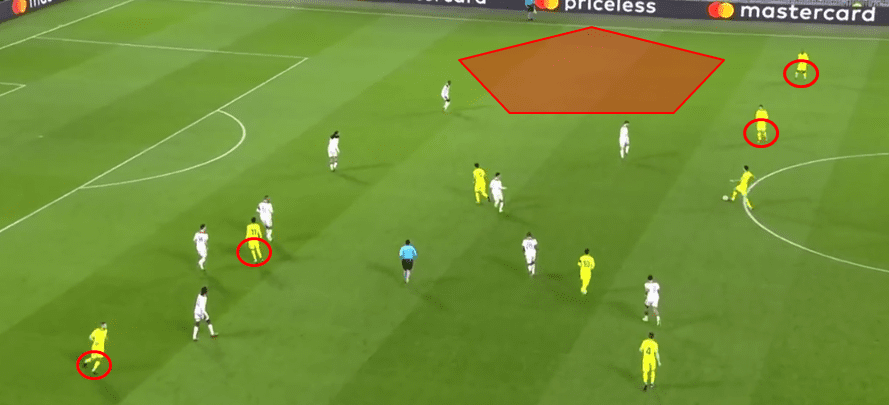
The above example clearly shows how that looked like in real life on the pitch. Jordi Alba and Ousmane Dembele combined fairly well to cause some serious danger for Lyon. The Spaniard overlapped constantly and, in truth, spent more time as a left midfielder or even as a winger than a left-back.
As predicted, the Frenchman occupied that left half-space to get the most out of Alba and his attacking contributions to the team. But look how empty that right side looks when Barcelona are building the attack.
Lionel Messi would also drift inside and drop significantly deeper than his actual position on paper, leaving the flank open for someone else. The problem was that there was no one to take it. Both Roberto and Semedo were restrained and focused on defending more than attacking.
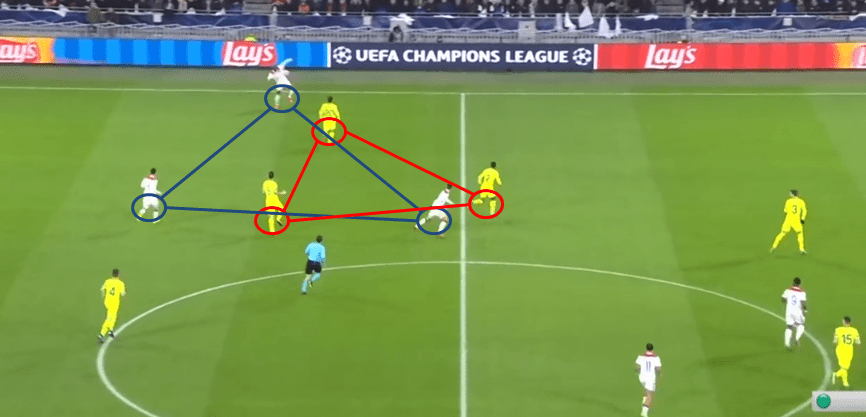
Lyon were still adamant on using their left to attack but were met with enough numbers to cover for it. Notice how both Roberto and Semedo are highly active defensively, and cover each other very well. This was excellent when having to prevent a swift counter but offered very little going the other way.
Knowing that the French team had the potential to hurt them in transitions, Valverde doubled his efforts to stop it, literally putting two to three men there to stop the bleeding. Sergio Busquets was also often seen pressing and blocking Lyon’s chances of a quick one-two that they so often use to make a quick break.
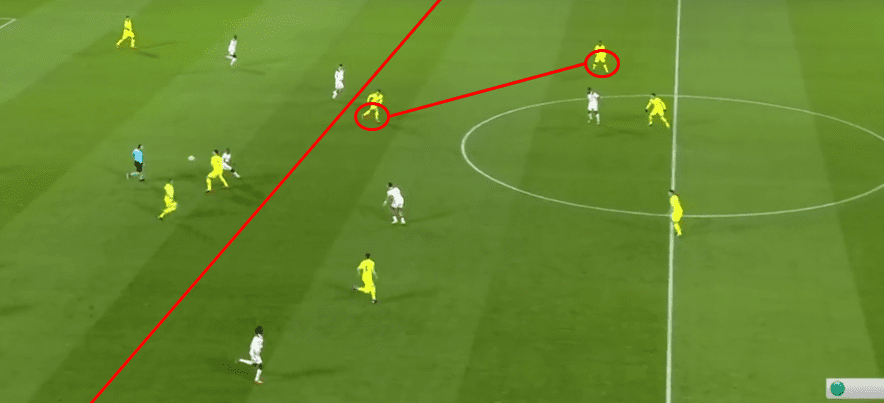
Similar ideas and similar outcomes
Both Lyon and Barcelona are known for their tendencies to press, and above all, press well and calculated. The hosts also knew that just by pushing up the pitch, they wouldn’t do much because they were dealing with Marc-Andre ter Stegen.
The German’s exceptional footwork enables Barcelona to effectively get rid of all and any pressure by simply sending the ball over to a free man higher up the park. Knowing this would be the case, Genesio instructed his team to press up to the back line and shut down the passing channels instead of pressing the man between the sticks himself.
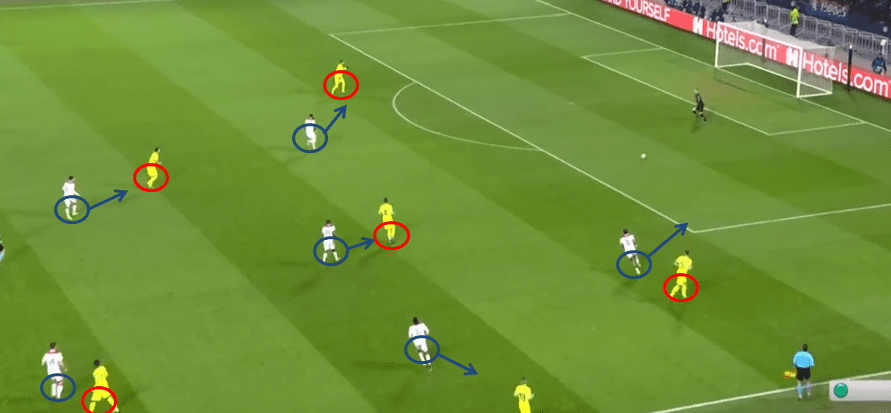
When everyone was well marked, ter Stegen’s long balls were met with less success than would have been the case had they not pressed well. Lyon’s ability to win their aerial duels was also important in this aspect and served them well with a 52.17% success rate (12/23).
On the other side of the pitch, Barcelona had a similar tactic in mind but with a different end result planned. They also pressed well and pressed high with numbers, starting with the front three who were supported by the midfield trident.
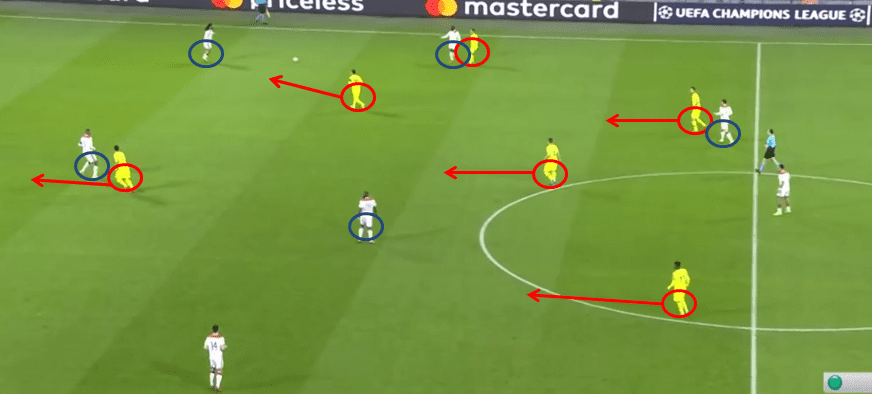
Notice how Luis Suarez is already on the move as he expects that their press will send Lyon backward. He expects either that or a lost ball which would mean that he would be one step ahead of the curve by positioning himself just at the right spot.
The press starts with Messi and Roberto but is supported by Ivan Rakitić, Sergio Busquets and Ousmane Dembele just a bit behind. Roberto was crucial in this part because his tank could last the longest which meant constant movement on the right.
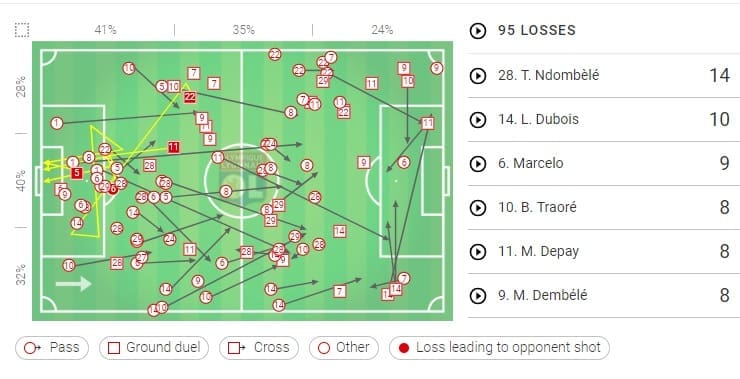
Lyon’s losses can be seen in the image above. Notice how the majority of them happened in their own half, which was a direct result of Barcelona’s press. The fact that they lost the ball a total of 99 times throughout the game was also a big problem for the French team, and a big boost for the Catalans.
Ndombele was one of their key figures on the pitch but Valverde knew that would be the case as the young midfielder is already getting a lot of attention by some of Europe’s best. With this in mind, he made a specific plan for him.
Even though a midfield trio of Sergio Busquets, Ivan Rakitić and Sergi Roberto is a predominantly defensive one, it is also a one that utilises the pressing game extremely well. Busquets was crucial in this regard.
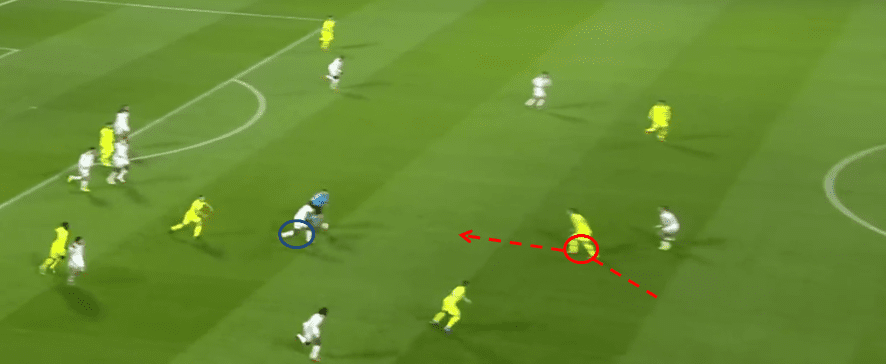
Barcelona’s pivot disrupted Lyon’s passing lanes and more importantly, shut down Ndombele’s chances of getting the ball forward with his usual sharpness. Consequently, there was such a high number of misplaced passes from the Frenchman (14).
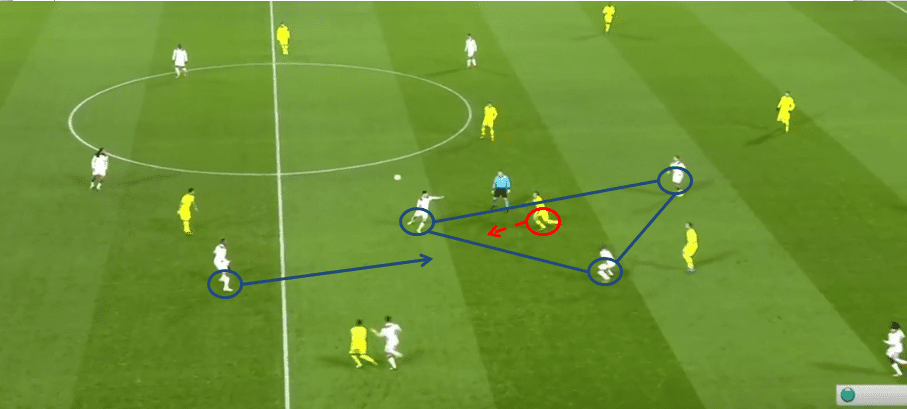
Apart from cutting Lyon off (three interceptions and 14 recoveries, seven in the opposition’s half), Busquets also created space for his teammates, as well as denying it for the opponents. By stretching both Houssem Aouar and Tanguy Ndombele, he created pockets of space for his teammates to exploit, especially Messi, who was usually tightly man-marked, as can be seen below.
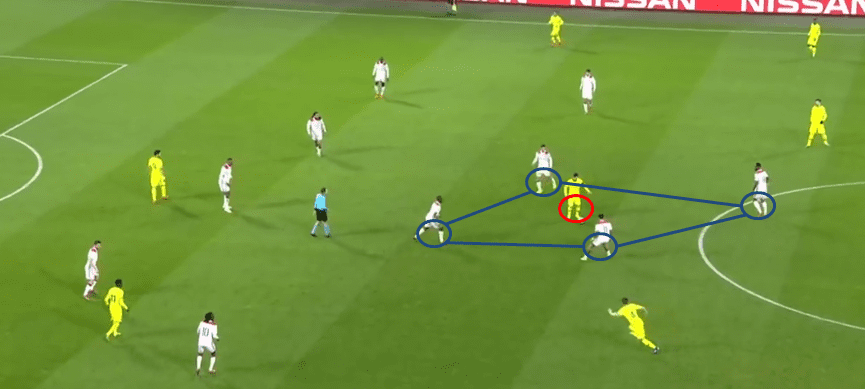
Lyon exposed
For all their defensive prowess, Lyon were exposed far too many times on the night, and only sloppy finishing saved them from conceding a crucial away goal in front of their fans. Their main problem was the misuse of their numerical superiority.
Admittedly they overcrowded the midfield on more than just one occasion, especially in the second half with the formation change. The fact remained that their marking and press in their own half was not good enough. Let’s examine some of the chances they let slip through.
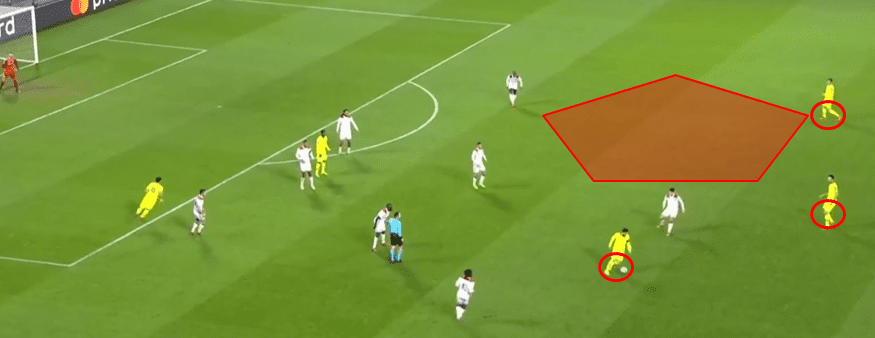
Notice above how Barcelona’s midfield has too much freedom, and they are not being covered or press properly. Both Sergio Busquets and Sergi Roberto are free to receive the ball and move it forward or toward the wings.
Just a couple of seconds later, Messi shifts the ball to the other side, and the pieces start moving again. But the same thing keeps happening for Lyon: they move as the ball moves, but keep forgetting their counterparts along the way.
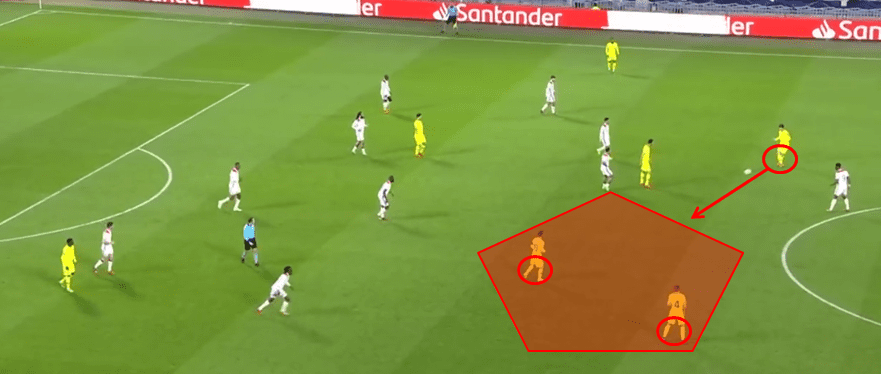
Once again, the midfield is free to receive the ball with no obstructions as Messi is found with ease, which should never, ever be the case when playing against Barcelona. The same goes for Ousmane Dembele, who was given tremendous freedom on multiple occasions. Luckily for the French team, none were taken by the Catalans.
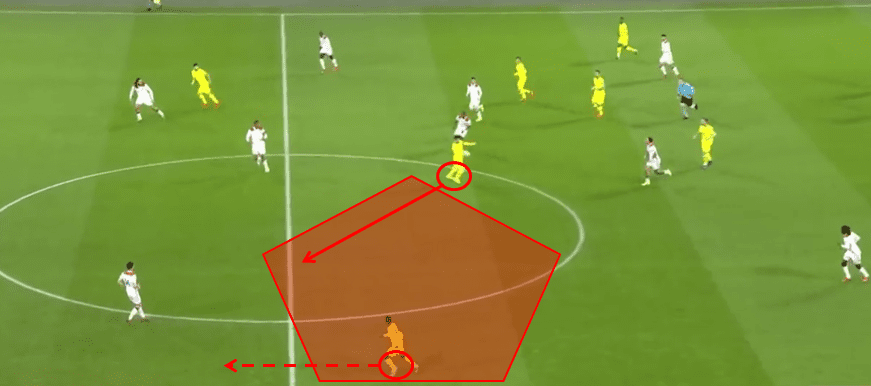
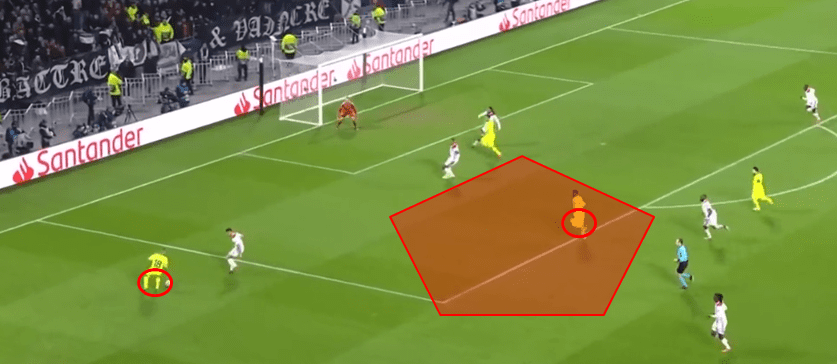
Genesio eventually noticed that his team was leaving big gaps in midfield so he switched to a more compact block and deployed a 5-4-1 formation to compensate for their shortcomings. This resulted in a more disciplined but also tamed Lyon, who entirely stopped threatening Barcelona at one point, yielding all the possession and control of the game to the visitors.
Still, in most cases they would welcome Barcelona to their half of the pitch in a 4-4-2 shape, but would then slowly but surely shorten the distances between their own players, making the block narrower and more difficult for the ball to pass through.
Barcelona’s domination yields no results
For all their possession and a total of 25 shots on goal, Barcelona were extremely wasteful and unproductive in the final third. What started off earlier in the month seems to still be the case as the Blaugrana is having more of the same problems now, but to a larger extent than before.
While creating chances was their main bane not so long ago, finishing them is on the agenda and list of problems Ernesto Valverde has to solve.
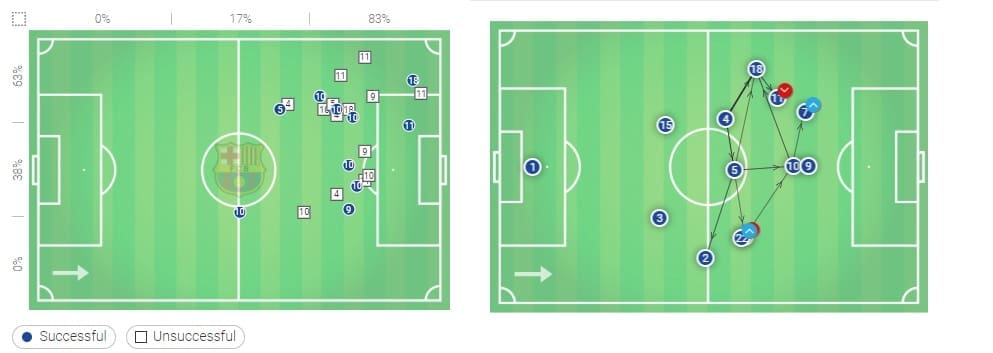
Getting to the final third was not so difficult for the Catalans with 89% success in that department, but smart passes into the box and around the final third were still missing. That means that even though they had chances to get into excellent positions, the final touches were missing, both in finishing and getting that final ball to go through.
The fact was that every touch Luis Suarez made on the night was more than just lacking, but slowed the play down, and stopped Barcelona’s attacks instead of progressing them. It was a tough night for the Uruguayan, and it wasn’t the first lately. It was also another headache for Valverde to deal with, and a rather big one.
Conclusion
The clash that was supposed to rain goals in France turned into an exciting but fruitless battle of two great teams. Both showed patience as well as some outstanding football but neither was able to finish their chances, which is a shame considering the sheer quality of the match.
Still, Lyon have survived the home leg without conceding a goal, which is crucial in these knockout stages in the Champions League. The thought of going to the Camp Nou trying to book their tickets to the quarter-finals is not really a pleasant one but nobody should write them off just yet.
For Barcelona, this is already the fourth draw in February, and despite their dominance over their French counterparts, they leave Groupama stadium with more on their minds than ever before. Now it’s back to La Liga but also back to the chalkboard as the team has a lot to think about if they want to stay relevant on all fronts.
If you love tactical analysis, then you’ll love the digital magazines from totalfootballanalysis.com – a guaranteed 100+ pages of pure tactical analysis covering topics from the Premier League, Serie A, La Liga, Bundesliga and many, many more. Buy your copy of the February issue for just ₤4.99 here, or even better sign up for a ₤50 annual membership (12 monthly issues plus the annual review) right here.

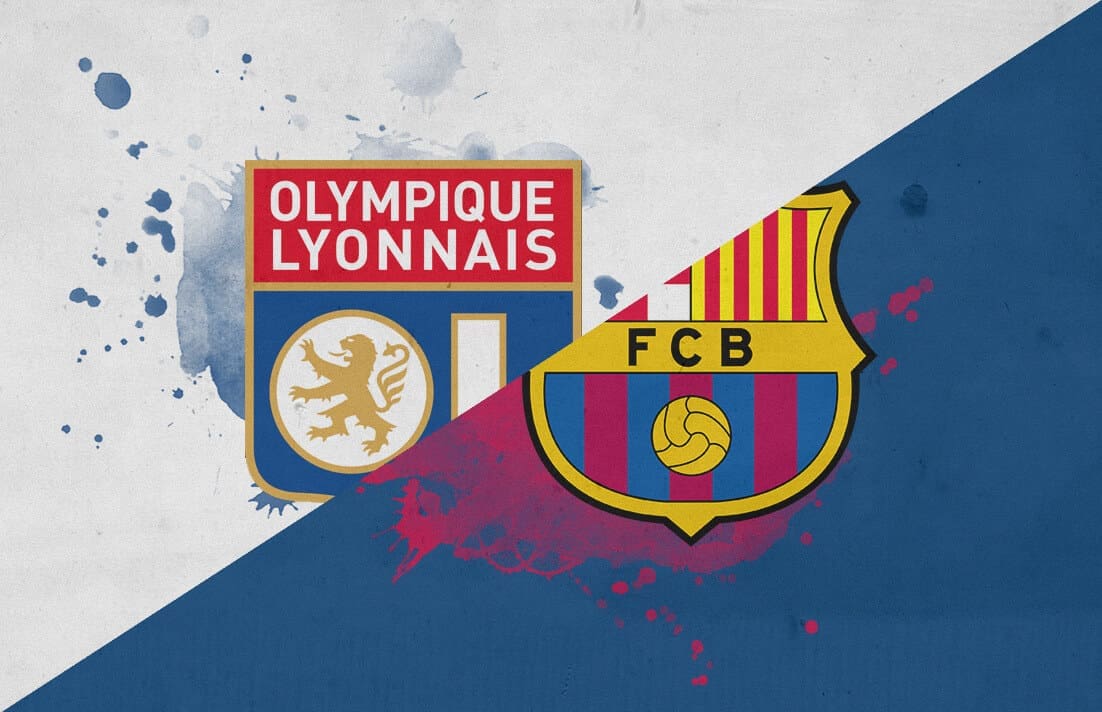




Comments